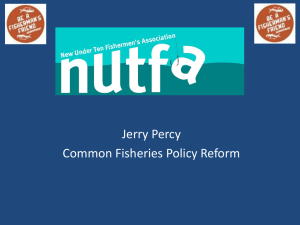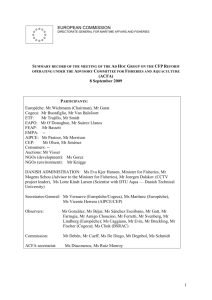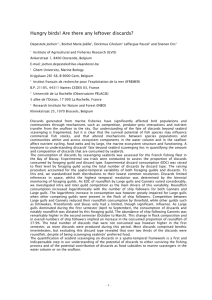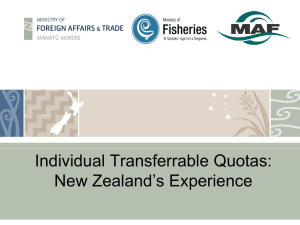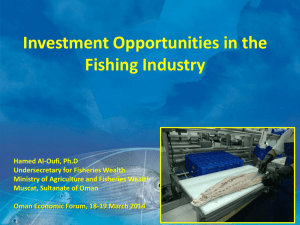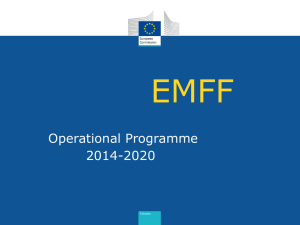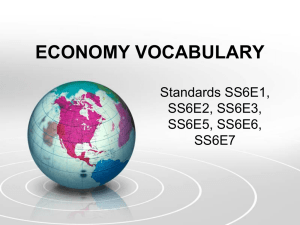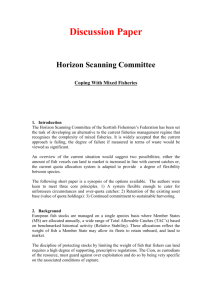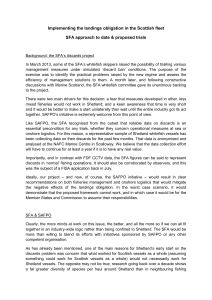Paper 7.1 DEFRA Paper Implementation of the Landings Obligation
advertisement
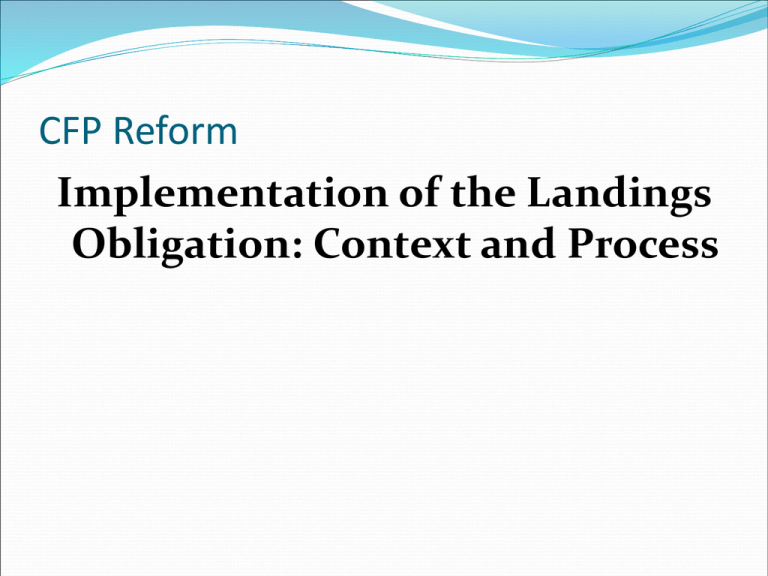
CFP Reform Implementation of the Landings Obligation: Context and Process The Key Legal Provisions Common Fisheries Policy – Basic Regulation Common Organisation of the Markets in Fisheries and Aquaculture Products European Maritime and Fisheries Fund Focus today on the Basic Regulation only Reform Package – Basic Regulation A brief history......... Proposals: • Green Paper in 2009 • Original Commission proposal (2011) • “General Approach” in Council (Feb 2013) • European Parliament amendments (Feb 2013) • Trilogues (March - May 2013) • Deal???? (June 2013) – to be finalised Key Content Regionalisation Elimination of discards Maximum Sustainable Yield Coherence with environmental legislation. Science External Dimension Aquaculture Discards Objective - Elimination of discards. • Progressively implemented landing obligations (discard bans). • Detailed rules/quota provisions to aid implementation. • Specifics can be set out in EU plans, or in detailed technical measures, but landing obligations / deadlines apply in any event. Regionalisation • Member States and Advisory Councils to work together to develop detailed technical measures. • Multiannual plans would set direction. Regions have the opportunity to agree management detail. • New routes to give measures legal effect. Regionalisation (continued) • Where Member States agree detailed measures for a fishery, option to enact quickly in EU law, or potentially national measures. • Cooperation between Member States and relevant Advisory Councils. • More responsive than co-decision. • Coordinated management without delegating legal power to Commission. Multiannual Plans • Multiannual plans consistent with general CFP objectives. • Either single species or mixed fisheries plans, with adjustments to achieve MSY. • Mandatory content – e.g. Quantifiable targets and safeguards. • Optional content – detailed conservation measures, discard provisions etc Maximum Sustainable Yield By 2015 where possible, 2020 in any event. Legally binding exploitation target, Biomass aspiration. Integration with Environmental Environmental Integration. Policy • Member States propose, but enacted via regionalised process, Commission powers in some cases, or full co-decision. • Protected areas and establishment of Fish Stock Recovery Areas Access & Fishing Opportunities • Access provisions continue – i.e. access to all waters, subject to 0-12 arrangements. • Fishing opportunities remain allocated by Member States; explicit criteria • MSs can choose Transferable Fishing Concessions as an option • MS reporting on capacity, action plan and “adjustments” where necessary. External Dimension External Dimension Principles guiding third country agreements and other external EU engagement : • Same principles of sustainability inside and outside EU waters. • More transparent agreements, based on science. • Coherence with development aims. Aquaculture Aquaculture • New Advisory Council for aquaculture. • Encouraging sustainable aquaculture, and national “strategic plans” Control & Enforcement Co-ordination, Compliance, Finance • Emphasis on coordination, cost-efficiency, culture of compliance and effective sanctions. • Financial assistance conditional on compliance with CFP’s rules. • EMFF (to be finalised) – to support implementation of reformed CFP. Discards (the detail) Discards – the detail • Landing obligations for all quota stocks • Deadlines: o Pelagics [no later than 1 Jan 2015] o Listed whitefish stocks, defined by fishery [2016-2018] o Remainder [2017-2019] Discards (Continued) • Catch limits control what can be caught, not what can be landed. • Quotas should be adjusted accordingly, but remain in place. • Technical rules conflicting with landing obligation reviewed/removed. • Reduce unwanted catch in first instance – selectivity, spatial measures, optimising use of quota. Discards (Continued) Exemptions: • Species for which fishing is prohibited; • Species for which scientific evidence demonstrates high survival rates; • De minimis exemption [5% after transition period] o Where evidence shows selectivity very difficult; o To avoid disproportionate costs in limited cases. Discards (Continued) Quota provisions: • Deducting unwanted catch from target species (not more than 9% of quota for target species). • Year-to-year flexibility of 10% of quota. • International swapping between MSs. Discards (Continued) Controls: • Full documentation of catches (including CCTV and/or other methods). • Minimum conservation reference sizes, where appropriate, fish below used only for non-human consumption. Implementation Implementation What is it that we have to do? • There is substantial change ahead but crucially flexibility on how to deliver. • Undertaking a detailed analysis of these new provisions. • Determine exactly what we have to do, by when, who needs to be involved, our options and what the respective roles and responsibilities could be. Thank you to Defra for helping me put this together.
